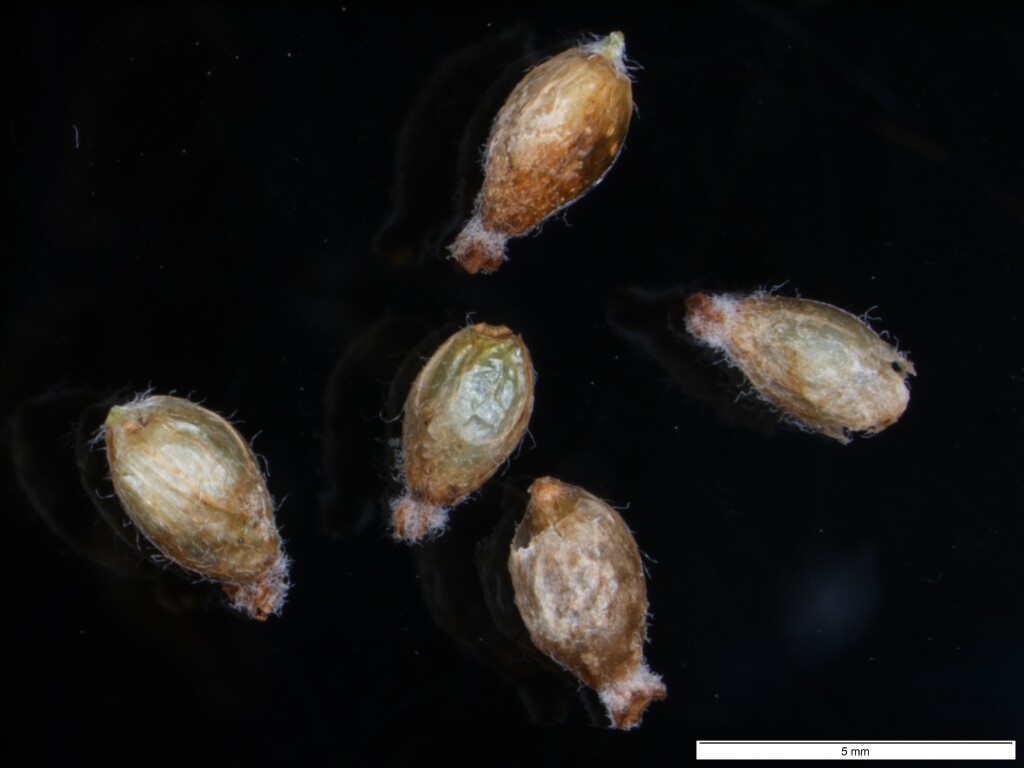Pimelea spinescens
Rye Spiny Rice-flowerDeeply taprooted, long-lived subshrub 5–30 cm high (rarely more); stems glabrous, spinescent. Plants mostly dioecious. Tips of branches and short-shoots often leafless and tapered to a weak point. Leaves opposite, shortly petiolate, narrowly elliptic or elliptic, 2–10 mm long, 1–3 mm wide, more or less concolorous, green, glabrous. Inflorescence terminal, often on a very short lateral branchlet, a compact head of 6–12 flowers; male inflorescences erect; female inflorescences nodding; involucral bracts leaf-like, 4, sessile, narrowly to broadly elliptic, 3–7 mm long, 1.5–4 mm wide, glabrous, green, often subtended by smaller, sometimes minute, bracts. Flowers unisexual (rarely hermaphrodite), white, cream or yellow, glabrous or hairy outside, glabrous inside; floral tube 1.5–3 mm long, style-portion of female flowers shorter than ovary-portion; sepals c. 1–2 mm long; pedicel glabrous or densely hairy; stamens shorter than sepals; anthers opening laterally or somewhat laterally. Fruit dry, enclosed, floral tube circumscissile above ovary.
MuM, Wim, VVP, VRiv, GipP, OtP, Gold, CVU.
The small stunted habit and the relatively crowded small leaves are distinctive.
There are two subspecies, both endemic in Victoria.
Entwisle, T.J. (1996). Thymelaeaceae. In: Walsh, N.G.; Entwisle, T.J., Flora of Victoria Vol. 3, Dicotyledons Winteraceae to Myrtaceae, pp. 912–930. Inkata Press, Melbourne.
 Spinning
Spinning
